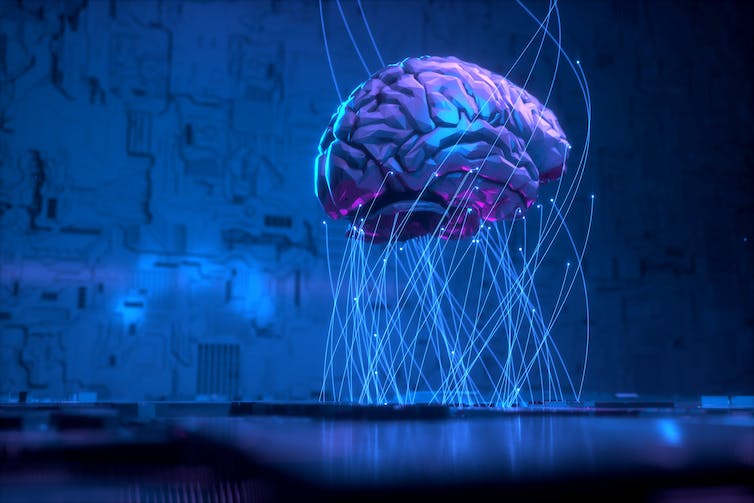Unlike the carefully scripted dialogue found in most books and movies, the language of everyday interaction tends to be messy and incomplete, full of false starts, interruptions and people talking over each other. From casual conversations between friends, to bickering between siblings, to formal discussions in a boardroom, authentic conversation is chaotic. It seems miraculous that anyone can learn language at all given the haphazard nature of the linguistic experience.
For this reason, many language scientists – including Noam Chomsky, a founder of modern linguistics – believe that language learners require a kind of glue to rein in the unruly nature of everyday language. And that glue is grammar: a system of rules for generating grammatical sentences.
Children must have a grammar template wired into their brains to help them overcome the limitations of their language experience – or so the thinking goes.
This template, for example, might contain a “super-rule” that dictates how new pieces are added to existing phrases. Children then only need to learn whether their native language is one, like English, where the verb goes before the object (as in “I eat sushi”), or one like Japanese, where the verb goes after the object (in Japanese, the same sentence is structured as “I sushi eat”).
But new insights into language learning are coming from an unlikely source: artificial intelligence. A new breed of large AI language models can write newspaper articles, poetry and computer code and answer questions truthfully after being exposed to vast amounts of language input. And even more astonishingly, they all do it without the help of grammar.
Grammatical language without a grammar
Even if their choice of words is sometimes strange, nonsensical or contains racist, sexist and other harmful biases, one thing is very clear: the overwhelming majority of the output of these AI language models is grammatically correct. And yet, there are no grammar templates or rules hardwired into them – they rely on linguistic experience alone, messy as it may be.
GPT-3, arguably the most well-known of these models, is a gigantic deep-learning neural network with 175 billion parameters. It was trained to predict the next word in a sentence given what came before across hundreds of billions of words from the internet, books and Wikipedia. When it made a wrong prediction, its parameters were adjusted using an automatic learning algorithm.
Remarkably, GPT-3 can generate believable text reacting to prompts such as “A summary of the last ‘Fast and Furious’ movie is…” or “Write a poem in the style of Emily Dickinson.” Moreover, GPT-3 can respond to SAT level analogies, reading comprehension questions and even solve simple arithmetic problems – all from learning how to predict the next word.




